- Community & Alumni Engagement
- Mountain Heritage Center
- Heritage and History
- Great Depression and War Years: 1929-1947
Great Depression and War Years: 1929-1947

In 1929 the school changed its name to Western Carolina Teachers College, reflecting its decision to become a four-year baccalaureate institution granting the bachelor of science degree in education. In addition to no longer enrolling high school students, for the first time the name "Cullowhee" was missing from the institution’s name.

By the 1930s, student social life was beginning to change. In response to a student petition, the faculty in 1932 allowed occasional mixed dancing, although under supervision. By 1944, Nancy Goodson remembered thumbing regularly to Sylva to buy things or get something to eat, and once even to Carson-Newman College across the mountains in Jefferson City, TN, to attend a basketball game: "I don’t think our families knew we thumbed to Sylva. They would have been praying for us, I guess." With the return of military veterans to campus after World War II, students became even less amenable to institutional control of their social lives.
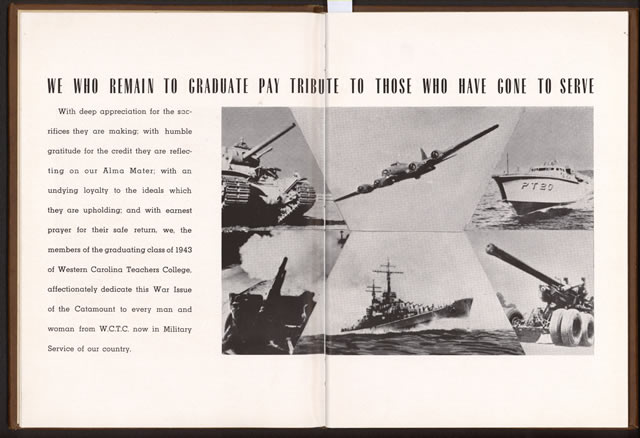
Most WCTC male students and many of its faculty were in active service during World War II. Jerry Rice, a senior in 1942, recalled how he came to enlist: "In the fall of '42...we were getting ready for our basketball season.... I talked to one of the army recruiters...and he told me and the other boys that if we signed up, we could finish the next...quarter, and that was the basketball quarter. So I signed up for the army." The reduction in the number of faculty and staff caused serious operational problems. Some students interrupted their education, while others completed their degrees under an arrangement between the college and the armed services. Enrollment fell from 522 in 1939 to 230 in 1943. Twenty-six WCTC men lost their lives in the war.
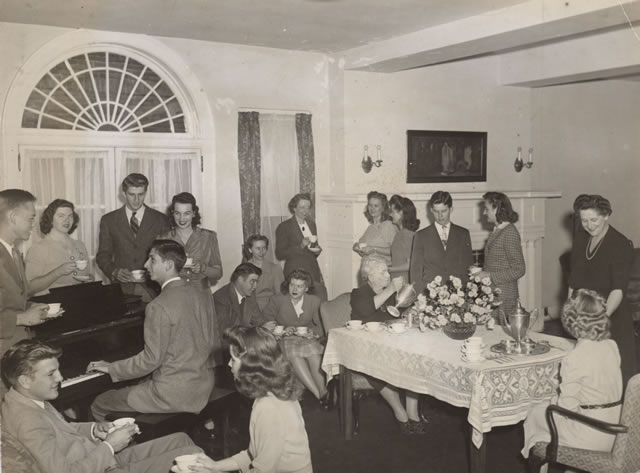
Tea time in the parlor of Moore Dormitory. Through the 1920s the institution continued to try to control the social lives of its students. Mixing of the sexes was only allowed under the watchful eyes of faculty chaperones, one of whom is pouring tea in this photograph.
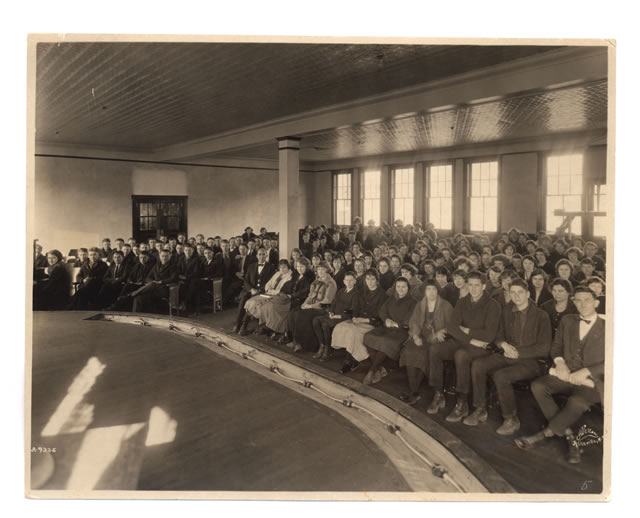
Mandatory chapel services met in the second floor auditorium of the Training School in the 1920s. Dean Ernest Bird is seated front row right, and history professor Edgar Stillwell is at the left end of the same row (to left of the column). Nancy Goodson recalled still being required to attend chapel in the 1940s, when it had moved to Hoey Auditorium. Student dress in this and other photographs indicates that the campus heating system in the 1920s may have left something to be desired.
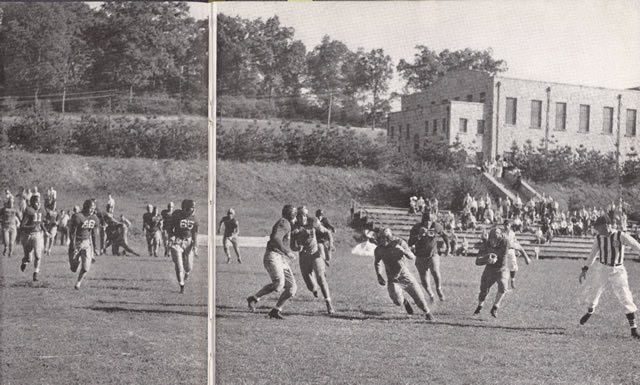
Football became a popular sport after it was revived in 1933. Games were played on this field where Stillwell Building now stands. Sarah Madison, whose father was WCTC's business manager and who lived on Buzzards Roost above the field, recalled watching football games: "We could just sit on the front porch and look down on it. Dad always had field glasses." The building in the right rear is Breese Gymnasium.
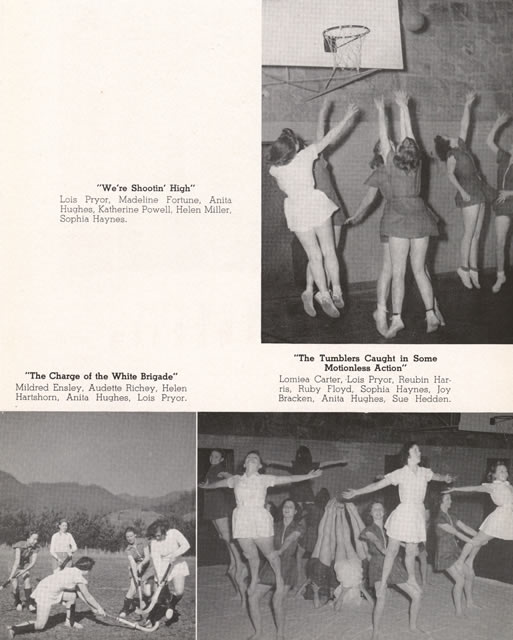
Basketball was another popular sport. Athletic opportunities for women also expanded during this period, although they were mostly intramural.
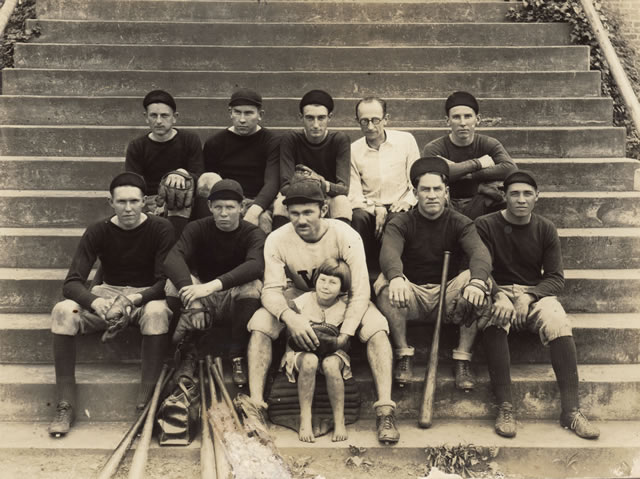
The 1930 baseball team on the steps of Joyner Building. Back row, left to right: Coffey, Pearl Kitchens, John Crawford, Coach Mitchell Plemmons (1928-32), Elmon Teague; front row: Hooper, Paul Buchanan, T. Ray Gibbs, C. C. Ward, John Hooper. The young girl is unidentified.
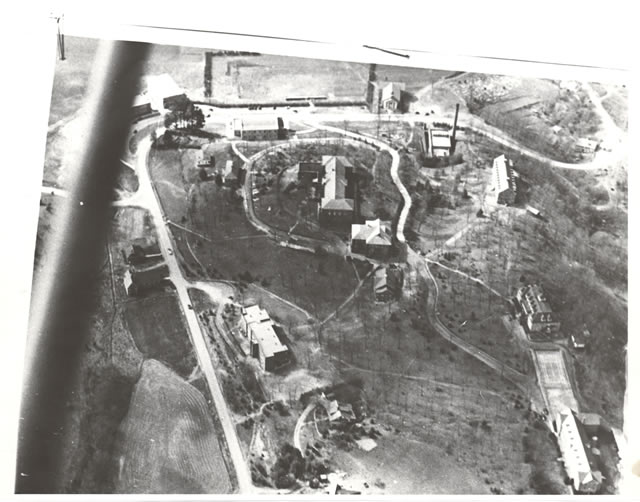
This aerial view shows the campus after the construction of 1939 was completed. The Training School is in the left foreground; Davies Home is in the right foreground. In the center are clustered the small Student Union, Joyner, and Moore; Graham Infirmary is barely visible to the left of that cluster; and the new Madison is to the right of the cluster. Along the top of the photograph L-R are McKee (partially obstructed by the airplane strut), University Auditorium (formerly Hoey), Breese Gym opposite the football field, the new Baptist Church, and the steam plant (with the smokestack). The physical layout of the campus remained basically unchanged until the next round of construction in 1952.
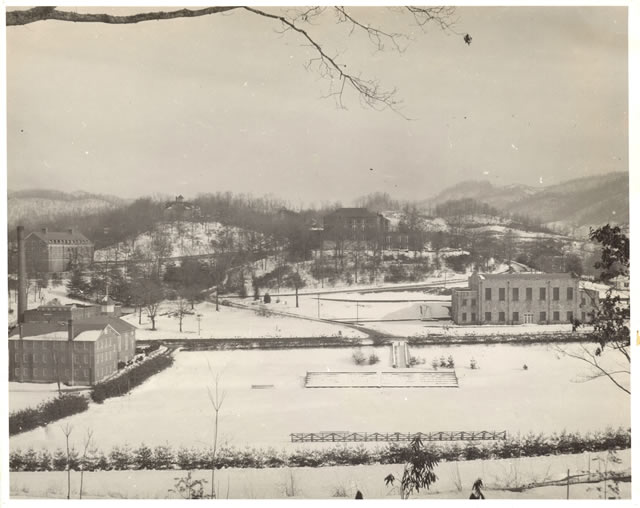
A 1940s winter scene of the campus from Buzzards Roost across the football field. Buildings from left to right include the new Cullowhee Baptist Church (the smokestack is attached to the steam plant across the road from the church, and New Madison is above them both), Davies on the snowy hilltop, Moore in the center, and Breese; Graham can barely be seen above the right end of Breese.
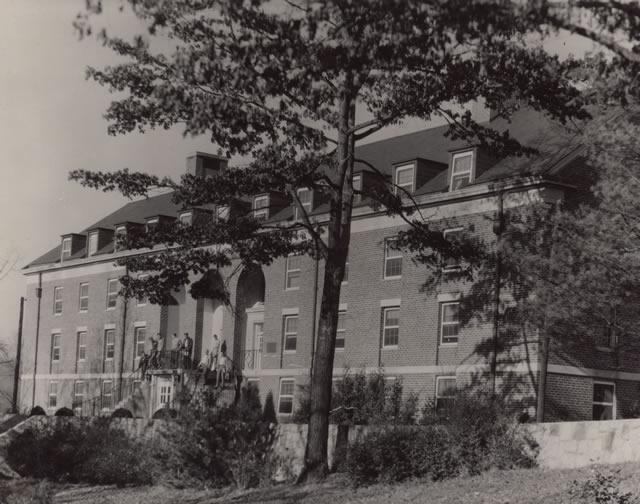
New Madison Hall, built to replace the original or "Old" Madison, served as a dormitory for men during this period. The men standing on its front entrance were looking down on the Woodland Theater, an outdoor stage where performances and pageants were held.

Graham Infirmary was built in 1939 (which incidentally marked the school's fiftieth birthday) as part of the six-building construction project funded by the New Deal's Works Progress Administration. Previously, the college infirmary was located in Moore Dormitory. Graham served as the infirmary for 64 years. It was torn down in 2018.
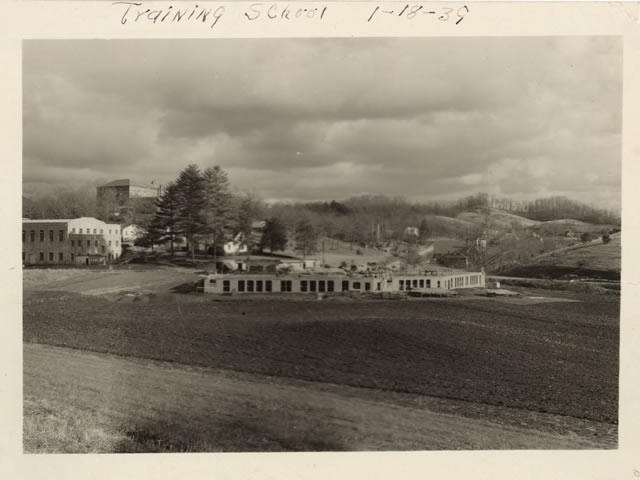
The McKee Laboratory School (seen here under construction, and sometimes referred to as McKee Training School) was named for Gertrude Dills McKee, first woman to be elected to the NC senate and a two-term member of the college board of trustees. When completed, McKee housed the Cullowhee grade school and served as the practice teaching facility for Western's education majors. Sarah Madison remembers that when "I went to do student teaching...I taught in the Cullowhee Training School, McKee School, for a year." The house visible in the pines behind the left end of McKee belonged to David Rogers, a prominent Cullowhee farmer who sold his farm to the school in 1924; the house burned down shortly after this photograph was taken. Breese Gymnasium is to the left, and Moore Dorm looms on the hill above Breese.

University Auditorium seated 900 and contained studios, classrooms, and practice rooms in the basement for the music department. The building was originally named for NC Governor Clyde Hoey, but was renamed in 2020.

The Student Union provided space for student government, clubs, and publications.

The scene in front of the new University Auditorium, October 28, 1939. Governor Clyde R. Hoey (near rear of automobile in foreground, with his hands on his lapels) is arriving to attend the ceremonies commemorating the fiftieth anniversary of the institution and the dedication of its six new buildings. Hoey was one of several notable individuals to participate in the ceremony. The Auditorium was originally named for Governor Hoey to celebrate his role in supporting higher education. The name was changed in 2020 to better reflect the values of inclusion at WCU.